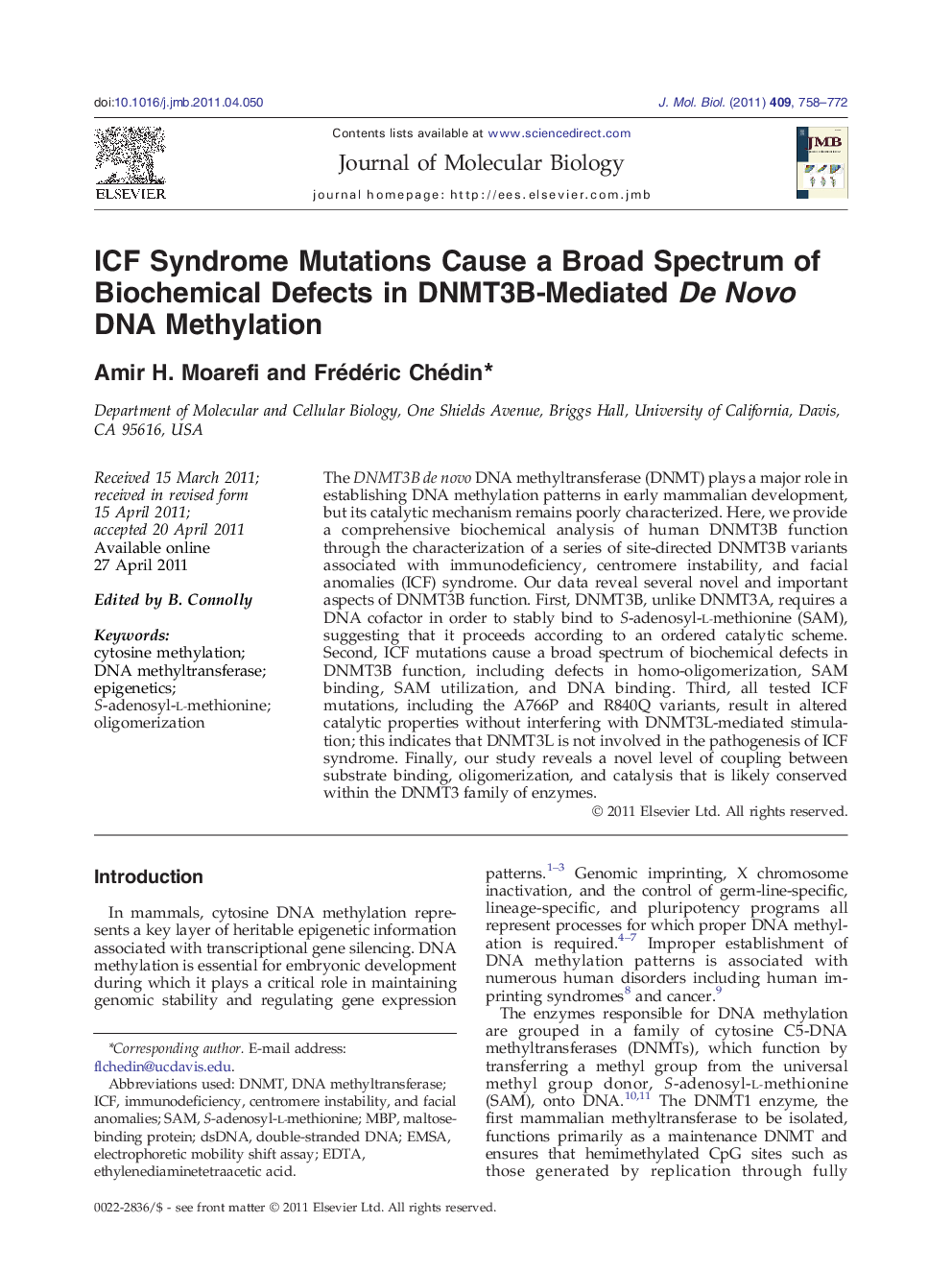| Article ID | Journal | Published Year | Pages | File Type |
|---|---|---|---|---|
| 2185248 | Journal of Molecular Biology | 2011 | 15 Pages |
The DNMT3B de novo DNA methyltransferase (DNMT) plays a major role in establishing DNA methylation patterns in early mammalian development, but its catalytic mechanism remains poorly characterized. Here, we provide a comprehensive biochemical analysis of human DNMT3B function through the characterization of a series of site-directed DNMT3B variants associated with immunodeficiency, centromere instability, and facial anomalies (ICF) syndrome. Our data reveal several novel and important aspects of DNMT3B function. First, DNMT3B, unlike DNMT3A, requires a DNA cofactor in order to stably bind to S-adenosyl-l-methionine (SAM), suggesting that it proceeds according to an ordered catalytic scheme. Second, ICF mutations cause a broad spectrum of biochemical defects in DNMT3B function, including defects in homo-oligomerization, SAM binding, SAM utilization, and DNA binding. Third, all tested ICF mutations, including the A766P and R840Q variants, result in altered catalytic properties without interfering with DNMT3L-mediated stimulation; this indicates that DNMT3L is not involved in the pathogenesis of ICF syndrome. Finally, our study reveals a novel level of coupling between substrate binding, oligomerization, and catalysis that is likely conserved within the DNMT3 family of enzymes.
► Purified human DNMT3B(Ct) stably binds to SAM only upon DNA binding. ► The conserved cysteine in the proline–cysteine motif is required for DNMT3B catalytic activity. ► ICF mutations affect DNMT3B catalytic activity but not stimulation by DNMT3L. ► ICF mutations cause a broad spectrum of biochemical defects in DNMT3B. ► DNMT3B homo-oligomerization, substrate binding, and catalytic function are coupled.
